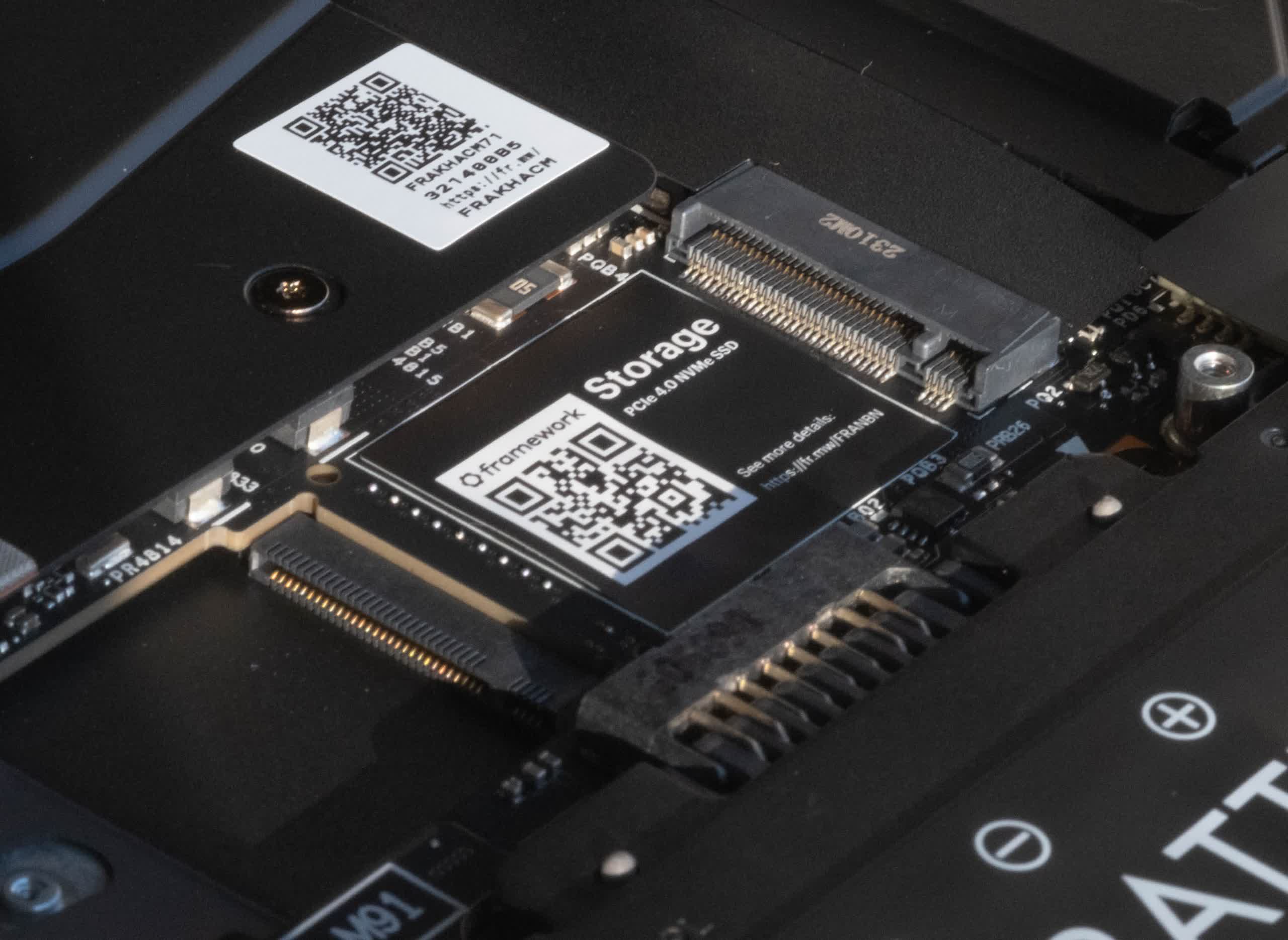
[ad_1]
In brief: Framework recently released the first upgrade for its 13-inch modular laptop series after announcing that a 16-inch variant is coming. While the company has been gradually revealing information about the hardware of the larger model, details regarding the unique feature of a swappable dedicated GPU are still pending.
After announcing the addition of a 16-inch tier to its modular laptop series, Framework has provided in-depth information on various aspects of the system including the display, power adapter, chassis, and memory options. The company plans to reveal more details about the remaining hardware specifications in the coming months.
The 16-inch Framework laptop will feature a 16:10 aspect ratio, 2,600 x 1,600 matte LCD with a variable refresh rate of up to 165 Hz. The semi-custom panel from BOE has a 100 percent DCI-P3 color gamut, a 9ms rise+fall time, and a 1,500:1 contrast ratio at 500 nits of brightness.
According to the company, these specifications provide a better balance between gaming, content creation, and general productivity than the original 13-inch model.

In addition, Framework highlighted the ease of screen replacement for the 16-inch model. While the Framework 16 won’t initially come with a touchscreen, the seamless replaceability offers the potential for users to upgrade to a touchscreen in the future.
In terms of power, the 16-inch model surpasses the Framework 13’s 60W adapter with a 180W adapter that uses the same IEC C5 connector. Customers will also have the option to customize the modular laptop with a 240W USB PD 3.1 adapter (instead of the standard USB-C brick), likely to get more performance out of the dedicated graphics card. Further details about the battery will be revealed by Framework in due course.
The 16-inch version of the Framework laptop, like its Ryzen-powered counterpart, features two SO-DIMM sockets that support semi-custom DDR5-5600 RAM. Each socket can accommodate up to 32 GB, allowing the system to reach a maximum capacity of 64 GB. Framework offers modules in 8 GB, 16 GB, and 32 GB configurations.

When it comes to storage, the Framework 16 offers two PCIe 4.0 M.2 sockets: one 2280 socket that can accommodate up to 8 TB of storage, and a 2230 socket supporting up to 2 TB. Pre-built models come with Western Digital’s SN810, which boasts sequential read speeds up to 6.6 GB/s.
The company previously confirmed that customers will have the option to utilize some of the laptop’s expansion bays for additional M.2. sockets, increasing maximum storage capacity to 16 TB. Framework also sells 256 GB and 1 TB USB-C expansion cards, which provide sequential read speeds of up to 1 GB/s.
Specifics regarding the connectors, keyboard, and expansion bay system are still forthcoming. We already know the keyboard will support multiple key counts, languages, and other features. The expansion bays will allow swappable GPUs – a holy grail for gaming laptops – and the company hopes GPU vendors and partners will back this ambitious feature. However, the bays could also support other internal components.
[ad_2]